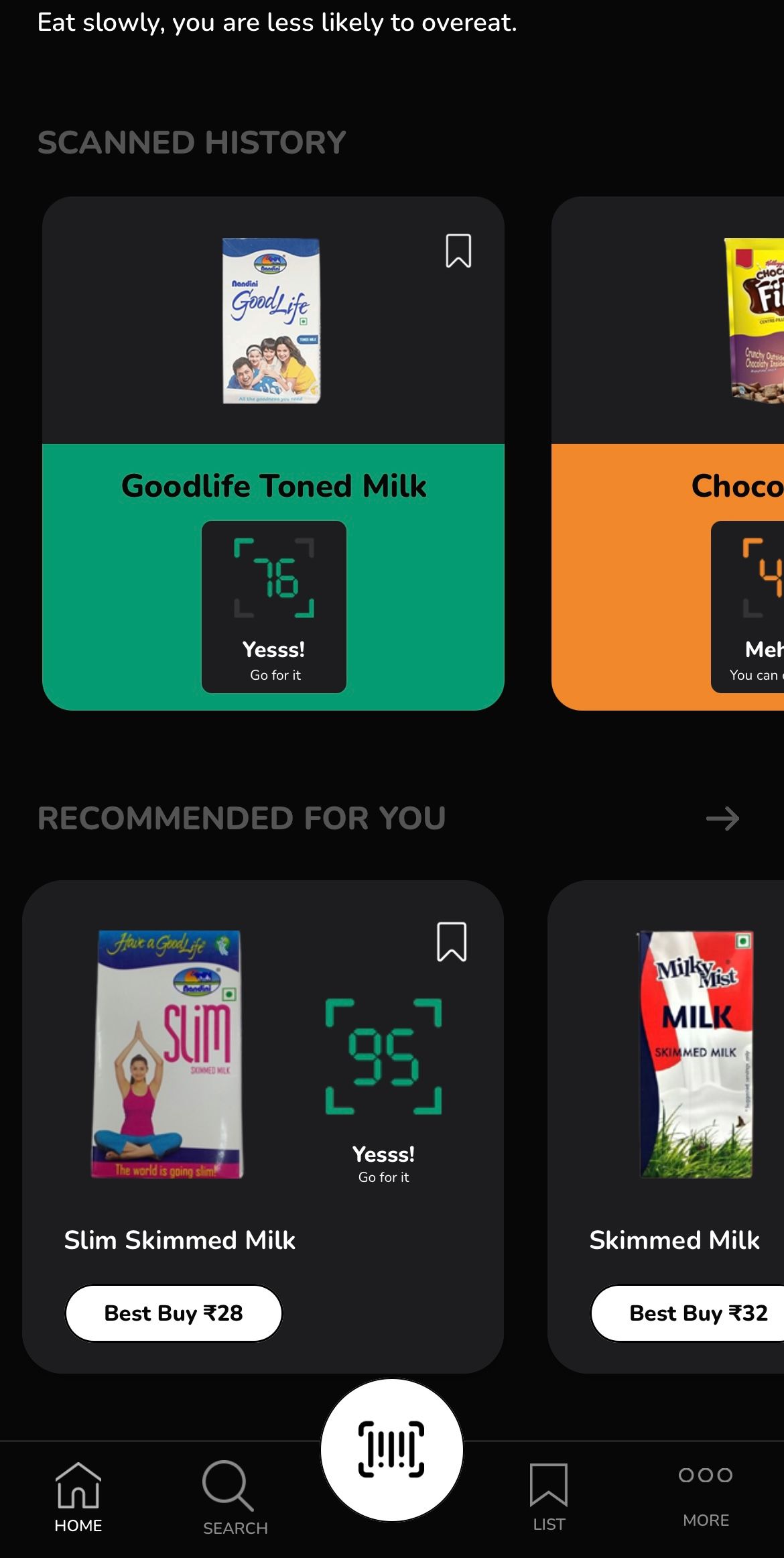
In November, the George Institute of Global Health at Oxford found that packaged food made and sold in India is among the unhealthiest worldwide. The study analysed over four lakh products from across 12 countries, including China, Canada, the US, and the UK.
“It is an alarming statistic. We have grown up eating our favourite chips and biscuits out of a packet. But to mistake health for nostalgia can be dangerous,” says Akshaye Jalan, Founder and CEO of Xume.
Mumbai-based Xume—as Jalan puts it, India’s first scoring and recommendation system—enables users to scan the barcode behind a packaged food item through an app and access the ingredients list with their nutritive values.
Launched in August with a seed investment from Aakash Chaudhary, Co-founder of Aakash Educational Services, Xume’s platform has leveraged AI to scour through a database of over one lakh products, 10,000 ingredients, and more than 3,500 brands to assign a score out of 100. The higher the score, the healthier the food.
“We eat every day, by choice or by default. And even though some of us eat with health in mind, very few of us pay attention to the labels on the products. With Xume, we wish to make it easier for consumers to know what they’re consuming,” Jalan explains.
As TripAdvisor is to travel and IMDB is to movies, Xume wants to be the go-to platform for nourishing eating choices, the CEO quips.
Building the database
Jalan, the former co-founder of early childhood learning platform Bumblebees, was alarmed when his father suffered a heart attack in 2015 despite being a fit sportsperson.
“It took several months to figure out what went wrong because Dad was physically active and consumed only home-cooked meals every day,” he recalls.
However, a closer look at the ingredients added to his daily meals—right from salt to flour—struck a realisation that not everything is as healthy as portrayed.
<figure class="image embed" contenteditable="false" data-id="533024" data-url="https://images.yourstory.com/cs/2/f3638ff0dcc111ec93bca187955479ef/IMG4383-1702552647228.jpg" data-alt="Xume" data-caption="
Screenshot of the Xume app
” align=”center” style=”float: left; margin-right: 20px; width:50%; height:auto”> Screenshot of the Xume app
“It was a rude awakening. There is so much in the smallest packets of food that is just not good for us. We may think that one bite won’t harm, but the ill effects will accumulate over the years.” Thus, a platform like Xume was imperative.
Following this incident, Jalan spent his time conducting research and speaking to executives well-versed in the consumer goods industry to understand how nutrition labels should be read.
He would hop from one grocery store to the other and click photographs of brands available in the market, analyse their nutrition facts, and source accompanying research to understand the health reality behind every ingredient.
It took eight years for Xume to be born, and today, the company has mapped a list of over one lakh products stocked on retail shelves.
The platform leverages AI to assign a score to each product based on over 60 parameters such as the percentage of sugar, trans fat, preservatives, etc.
Xume derives its intelligence from research and data points provided by nearly 23 regulatory bodies around the globe, including India’s Food Safety and Standards Authority of India (FSSAI), the United States Food and Drug Administration (US FDA), and Europe’s Food and Drug Administration, among others.
The process is simple. If a user scans the barcode printed behind a food packet using Xume’s smartphone app—which has a total of 10,000 downloads across Android and iOS devices—they can view the ingredients list and a personalised score measuring the healthiness of the product.
If the score is poor, Xume will recommend alternatives with a higher score under the ‘recommended for you’ tab.
Speaking of the next milestones, Jalan says the food space is evolving quickly, rendering it impossible to set a target. “There are new products added to the shelves every day. We are working very hard to expand our portfolio as rapidly as we can,” he adds.
<figure class="image embed" contenteditable="false" data-id="533020" data-url="https://images.yourstory.com/cs/2/f3638ff0dcc111ec93bca187955479ef/Image03xp-1702552010151.jpg" data-alt="healthy food" data-caption="
Representative image
” align=”center”> Representative image
.thumbnailWrapper
width:6.62rem !important;
.alsoReadTitleImage
min-width: 81px !important;
min-height: 81px !important;
.alsoReadMainTitleText
font-size: 14px !important;
line-height: 20px !important;
.alsoReadHeadText
font-size: 24px !important;
line-height: 20px !important;

The business plan
On the business-to-customer (B2C) front, most of Xume’s features, including recommendations, personalised recipes, curated grocery shopping lists, and access to masterclasses and events, are available to its ‘Pro’ users for a monthly subscription fee of Rs 1,299 or a yearly price of Rs 8,399.
On the other hand, Xume makes money on a contractual basis In its business-to-business (B2B) partnerships.
While Xume’s app is making smarter food choices available for consumers at the click of a button, the company’s roadmap includes a strong B2B strategy.
It has partnered with six organisations in the insurance, diagnostics, and healthcare space to integrate its personalised grocery-scoring intelligence.
Most recently, Xume joined hands with diagnostics startups Microbiome.in and TruDiagno, aimed at strengthening the preventative healthcare ecosystem.
“Imagine the power of understanding our microbiome and diagnostic markers to drive actionable intelligence; where the answer is not giving up our favourite foods, but simply making better choices based on what our gut and body are telling us,” Jalan says.
Tie-ups with insurance players, including Digit Insurance and Aditya Birla Health Insurance, will also be a game-changing proposition, according to the co-founder. Through the integration, insurance providers can allow users to access Xume’s engine to make healthier food choices.
However, he believes that B2B and B2C plays are co-existent, as the B2B segment provides validation and builds credibility.
“B2B partnerships are part of the process to create awareness, develop the hype, and get more users to explore Xume. It doesn’t matter what the first point of contact is; we just want people to feel the power of what we’re building,” he notes.
Over the next year, Xume aims to add several more players to its B2B strategy, with three already in the works.
“We are choosing quality over quantity. Even if we forge just another three to four tie-ups next year, we are confident that people will find us,” Jalan adds.
(Lead image design by Nihar Apte)
Edited by Suman Singh










